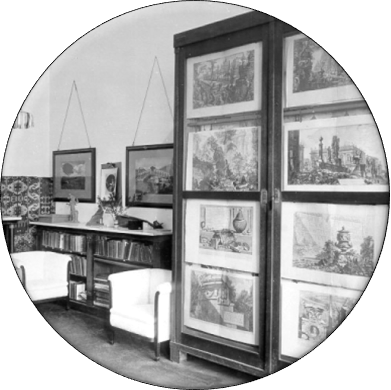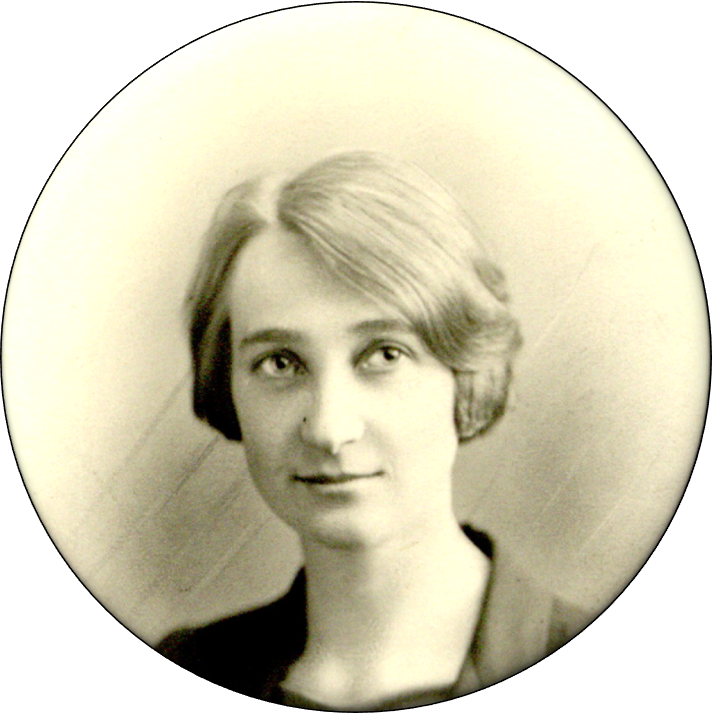
Engraving onto a metal or wooden plate is one of the oldest printmaking techniques in the world. Before the invention of photographic reproduction, engraving was especially important for the reproduction of illustrations for books, newspapers, and journals. For example, numerous engravings and etchings of the historical buildings of Rome, stored in the BSR’s Library, helped to circulate knowledge about ancient architecture around the world. Thomas Ashby (director of the BSR during 1906-1925) inherited from his father a collection of Renaissance prints, including a volume by Giovanni Battista Piranesi (1720-1778). At the time of the establishment of the Fine Arts Faculties in 1913, engraving had seen a revival beginning in the nineteenth century.

Artists enjoyed this technique as it allowed them to achieve the finest level of detailing, control over the composition and a possibility to produce multiple prints. In the BSR archive, you can find photos of engravings created by resident artists Job Nixon (1891-1938), Lilian Whitehead (1894-1959), Robert S. Austin (1895-1973), Evelyn Gibbs (1905-1991) and others. The Faculty of Engraving was established within the BSR following the end of the First World War — in 1920, with the donation of philanthropist Stephen Courtauld. From its inception, the Faculty was chaired by Frank Short (1857-1945), a prominent artist, teacher of engraving, etching and drypoint, and the revivalist of techniques of mezzotint and pure aquatint.
The Faculty aimed at providing a continuous graduate-level education to promising artists and, as a result, to revive the art scene back home by building connections to the ‘source’ of European culture and artistic craft — Rome. Most engraving scholars arrived at the BSR from Royal College of Art, but also from the Slade School of Fine Art, the Royal Academy School, the School of Art in Liverpool, Birmingham School of Art, and other institutions. One to three scholarships were awarded per year to the most successful engravers who could live and work in the BSR’s purpose-built arts studios for up to three years. Job Nixon was the first engraving artist awarded the scholarship in 1920. He was followed by Lilian Whitehead and R. S. Austin in 1922. Later in the this period the prizes went to Charles Murray (1894-1954) in 1923, William E. C. Morgan (1903-1979) in 1924, Edward B. Hoyton (1900–1988) in 1926, Frederick G. Austin (1902-1990) in 1927, E. S. S. Jones in 1927 and the third women winner of a Rome Prize at the BSR, Evelyn Gibbs in 1929. The Rome Prize for Engraving later was renamed as a prize for printmaking.

The BSR’s engravers produced numerous studies of Roman architecture, but also travelled outside of the ancient capital with the fellow painters to find subjects for their work in the countryside. The area of Anticoli Corrado, for example, was especially popular thanks to its scenery and local community.
So how exactly is an engraving made? Firstly, the design is incised into a metal plate or a block of wood by hand. To do this, an artist uses a burin — a delicate chisel with a small diamond-shaped tip. Incised grooves can be deep or shallow, applied at various angles and with different density. This allows the artist to control the amount of ink that the plate will hold during printing. Burins of different sizes can be used to adjust the hatching by adding finer lines, dots and strokes. After the design’s incision is complete, the plate’s surface is inked and wiped with a starched cheesecloth. Now the plate is ready for printing. While it is possible to produce a print by manually pressing the paper against the plate, most professional engravers roll dampened paper placed on top of the inked plate through the mechanical press to apply pressure evenly. The resulting image on paper produces a reverse impression of the incised design. Plates wear out with each printing, so it is possible to create only a limited number of prints. Each engraving made from the same plate is referred to as an ‘edition’.
Click here to see the process of making a contemporary wood engraving by the BSR Alumna Anne Desmet.
Where would you like to go next? Who would you like to meet?
Sources and Further Reading
Griffiths, A. (1996) Prints and Printmaking: An Introduction to the History and Techniques, London: British Museum Press.
Campbell Fine Art https://www.campbell-fine-art.com/
Wiseman, T.P. (1990). A Short History of the British School at Rome. Rome: BSR.
For a full bibliography and further reading, see here.


